Introduction: Sew Pajama Pants From a Pattern
In this Instructable I'll show you how to sew a simple a pair of pajama pants from a commercial pattern. Commercial patterns are are a great tool to use when you're learning to sew because they take a lot of the mystery out of garment construction and they are surprisingly cheap. These pajama pants are a good place to start because they are relatively simple, unisex, and they don't need any precise fitting. They are also comfy and cozy and fun to customize with cute fabric :)
Most patterns follow the same general format, so we'll also spend some time demystifying the dense information and mysterious markings you'll find on your average pattern. Being introduced to commercial patterns will give you a whole world of possibilities as you embark on further sewing adventures. There are a million different pattern styles out there to choose from, so you can usually find something you like, especially now that there are more and more indie pattern designers creating stylish contemporary designs.
If the sewing techniques in this class seem a little beyond your skill-set or you are looking for more general beginning sewing instruction, check out my free Machine Sewing Class!
Step 1: Tools and Materials
For this project you'll need some basic sewing tools:
- Sewing machine
- Iron and ironing board
- Extra bobbins
- Standard sewing machine needles
- Fabric shears
- Paper scissors
- Thread snippers
- Seam ripper
- Hand sewing needles
- Pins
- Magnetic pin holder
- Transfer paper
- Tracing wheel
- Tailor’s chalk or disappearing marker
- Flexible measuring tape
- Clear 18"x2" ruler
- Pattern paper or Large Sheets of tracing paper
- Hip curve (optional)
- Buttonhole foot (if your machine needs one to make buttonholes)
Materials:

- Fabric: 3 yards flannel, small scrap of fusible interfacing
- Materials: matching thread, Pajama Pants Pattern, 30" - 40" of ¾” wide elastic for waistband (depending on waist size), 2 yards cord, ribbon, or twill tape for drawstring
Step 2: Understanding a Commercial Pattern
Understanding a sewing pattern can be a bit intimidating at first, but once you learn how to interpret one, they are really quite easy to use, so before we start making this project I'm going to go over the basics of working with commercial patterns.
I've chosen this pajama pants pattern from New Look, but you could choose any similar pattern and most of the information will be the same.
The Front of the Envelope: on the front of most commercial patterns, you'll find a few important bits of information... and also sometimes a photo that looks like a Sears catalog portrait of the Stepford family...but try not to judge a pattern by its cover models, you can actually find some good designs hiding behind the bad marketing.
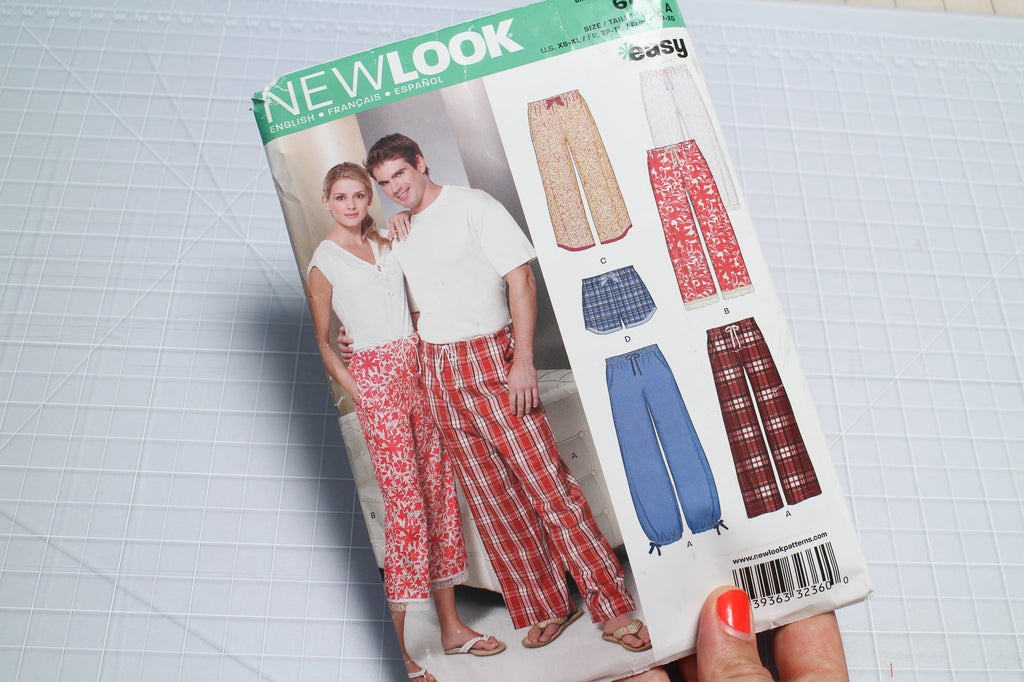
- Pictures of the Design Options: most commercial patterns from the big pattern companies have a few variations of the basic design which are usually shown on the front cover. In this case, we can see that this is a pajama pants design that can work for men or women, and has full length, cropped and shorts variations as well as different options for pockets and cuffs.
- Size: to the right you'll see the size range listed. Commercial patterns contain a range of sizes, but be sure to look at the measurements on the back of the pattern to check if your size falls within this range (we'll talk more about this in a minute).
- Difficulty: below the size range on this pattern envelope, you'll find the the pattern company's idea of how difficult this particular pattern is. This is, of course, is dependent on your skill level, but an easy pattern is usually a pretty safe bet for a beginner.
The Back of the Envelope: The back of the pattern has a lot of information on it that can be a bit overwhelming, but once you know what to look for, there's no need to panic.
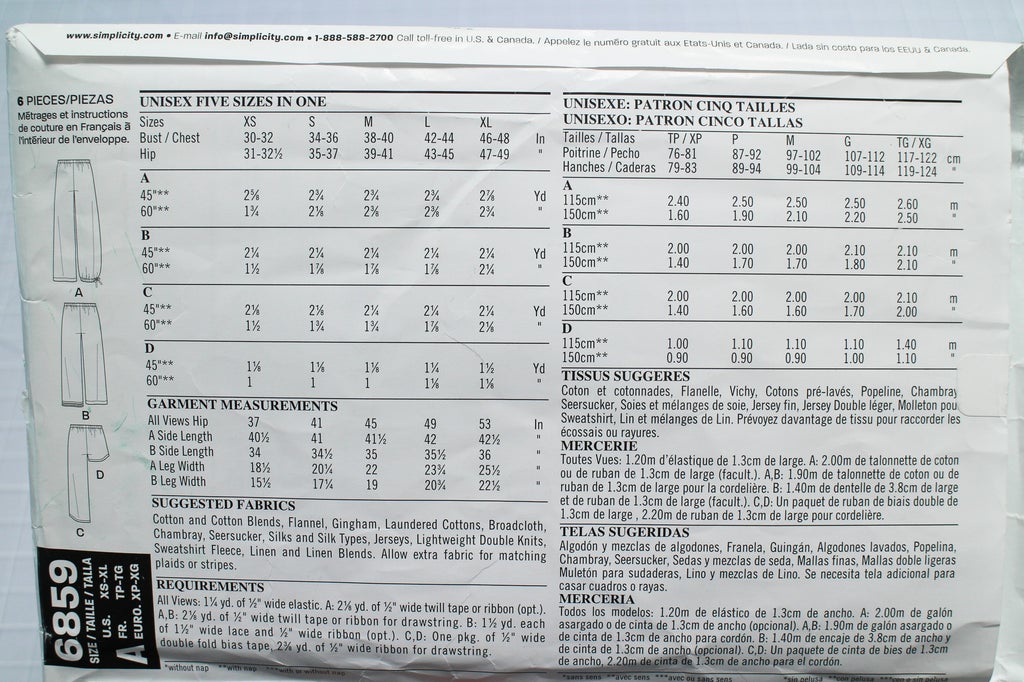
- Pieces (Styles): This pattern contains 4 styles, which are pictured on the far left. They are showing drawings of the backs of the garments here because they showed the corresponding front drawings on the front of the envelope. The letters next to each drawing correspond to the number of that style which will be labeled elsewhere on the pattern.
- Sizes and Measurements: To the right of the drawings, you will see a row of sizes with corresponding "bust/chest" and "hip" measurements. When you are picking out a pattern, you can use these to make sure that your size falls somewhere within the range of the pattern, but it is usually not a good idea to use these measurements to pick the final size you are going to make for yourself. The sizes on commercial patterns often do not correspond to ready to wear clothing sizes, so if you usually wear a medium, for example, don't assume that you will be a size medium in a sewing pattern. The measurements will give you a slightly better idea, but for some reason, commercial patterns usually include an excessive amount of extra room (or ease), so their suggested sizes are often too big. If the envelope has the "Garment Measurements" printed on it, these can give you a more accurate estimate of how big the designs will actually be.
- Yardage: Under the measurements, you'll find the required yardage for each size and style. There will be different requirements if your fabric is 60" or 45" wide, so make sure you check how wide the fabric is when you're buying it. You can sometimes squeeze a pattern into a smaller amount of fabric than the pattern suggests, but I always try to get a bit more than the requirement in case of mishaps.
- Garment Measurements: This section is where you should actually look to decide what size to make. It lists what the finished garment measurements will be for each size and style. For example, my hip measurement is about 38" right between the small and the medium measurements in the "sizes" section, but by looking at the Garment Measurements, I can tell that I should be making myself a size small because the 45" hip measurement of the medium would be way too big. Keep in mind that you should allow at least 1/2" of ease for fitted garments and more if the garment is supposed to be loose.
- Fabric Suggestions: this is where you'll find what kinds of fabric will work best for this particular design.
- Requirements: this section lists the other things you'll need to make this garment, like zippers, hem tape, interfacing, etc.
The other half of the pattern has the same info in French and Spanish, so if those languages are better for you, you're in luck!
Inside the Envelope: inside you'll find the pattern itself, usually printed on very thin tan tissue paper, and also a set of instructions that tell you how to sew each different style from the pattern.

Look at the instruction booklet to help you know which pattern pieces you need to cut out to make your design. I Iike to circle the options I'm choosing to help keep everything straight.

The instructions will also give you some "Cutting Layout" suggestions of the best way to lay out your patterns on your fabric, this will be useful a little later when we're cutting out the pattern.

In the "Sewing Directions" section, you will find some important info, such as how wide your seam allowances should be, in this case 5/8", and how to finish your seams. On the following pages of the booklet you'll find step by step instructions that tell you how to sew the pants. These directions are usually pretty easy to follow, but I'm going to show you the process in photos too.

Step 3: Taking Your Measurements
If you don't know your measurements, you'll need to take them to figure out what size to choose from the pattern. First look at the measurements that are used to identify the patterns, then take these measurements on yourself.
On this pattern you only need the hip and leg length measurements. Take your hip measurement by wrapping a tape measure around your hips at their widest point, usually about 9-11" inches down from your belly button.
Measure your leg length for this pattern from 1" below your waist, over the side of your hip and down to your ankle bone (sometimes this one is hard to do for yourself and it's better to get a friend to help you).
Step 4: Understanding the Pattern Itself
When you open up the folded pieces of tissue paper inside the pattern, you will find your pattern pieces arranged together with a lot of different markings and words printed on them. You need to decipher all this to know which pattern pieces to use and which lines to follow.
Cut Lines For Different Sizes: On a multi-size pattern, each pattern piece will have not one, but several outlines that correspond to different sizes. On this pattern each size outline is printed in a different pattern of dots and dashes to help you follow the right line all the way around the pattern. Once you have chosen a size, you will find the lines that correspond to it and cut each pattern piece out along this line.

Grainlines and Cut on Fold Lines: as we learned when we were working with the flying fox pattern, on each pattern piece you will find either a straight line with an arrow on each end, or a line with arrows at 90 degree angles on each end. The straight arrows are grain lines that show you how to orient the pattern pieces in relation to the grain. Lines with 90 degree angles are cut on fold lines
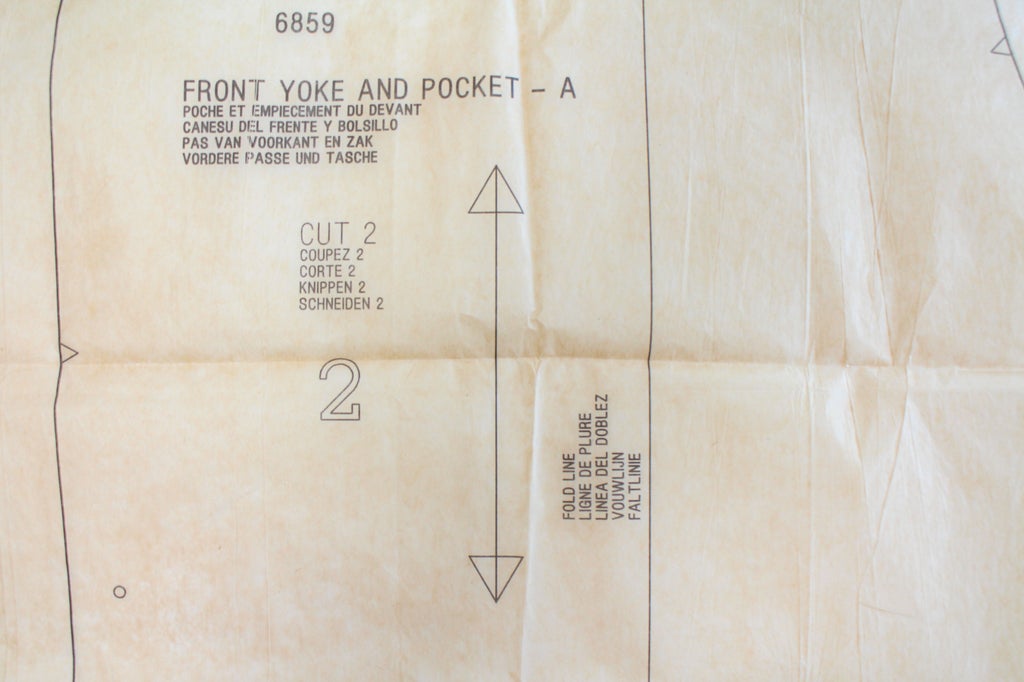
Notches: on most commercial patterns, you will find one of two types of marking that indicate where to make a notch. On this pattern notches are shown as little triangles pointing in from the cutting line. To mark the notches, you can either snip 1/4" into the seam allowance at each notch or cut a triangle past the edge of the pattern, pointing out away from the sewing line. Notches are there to help you align pieces properly with each other and and know which two piece go together. Some seams will be marked with single notches, and some with double notches. Match double notches to double notches and single notches to single notches.

Buttons and Buttonholes: on this pattern, there are 6 buttonholes that will be used to insert drawstring cords. These are marked like you marked the buttonholes you created in the last lesson, with a line with a T on each end. Mark these with a tracing wheel and transfer paper.

Step 5: Tracing the Pattern
The problem with patterns that are printed on tissue paper like this, is that it's hard to use them more than once. Also, if you wanted to make the same pattern in different sizes, cutting one size out of the tissue paper will prevent you from cutting another size. For this reason, it can be a good idea to trace the pattern onto sturdier paper.
Before you start tracing you can cut roughly around each pattern piece you need, to separate them from the rest of the tissue paper, or just keep the whole sheet intact. Iron the tissue patterns flat with your iron on a low, no steam setting.


There are a few different ways to trace patterns, but the method I prefer is to lay blank white pattern paper over the printed pattern and just trace the markings through with a pencil and a ruler. I think it also helps to have something white underneath the printed pattern because it makes the lines stand out more clearly.
If you aren't working on a white table, you can put sheets of white paper under the pattern. Put your pattern paper over the top, and pin it to the pattern in a few places, or weigh it down with a few weights or heavy objects. Pattern paper is a bit translucent for this exact purpose, so you should be able to see the lines of the pattern through the paper. If you find the lines too difficult to see, you can try using actual tracing paper, or tracing your pattern over a lightbox or even a window.

Choose the size you're going to make, and only trace off the lines that correspond to that pattern. I find it easier and more accurate to just mark important points, like corners and then use a ruler or a hip curve to fill in the lines between the marks.

In addition to the cut lines of the pattern, mark any other important information, like notches, buttonholes, grainlines and the pattern label and cutting instructions.


When you are done tracing, cut each of your pattern pieces out along the cutting lines.

Step 6: Cut Your Fabric
Now, finally, you are ready to start making these pajama pants!
Lay your fabric out on your cutting table, refer to the pattern instructions to see suggested cutting layouts for different widths of fabric. I folded my fabric over on top of itself, right sides together, lining up the selvages, then arranged my three pattern pieces on the fabric.


To make sure the grainlines of the patterns are parallel to the grain of the fabric, use a ruler to measure in from the selvage to the grainline, making sure it is an even distance away all along the line.

Pin the pattern down in a few places, near the edges.

Then cut out each piece with your scissors, exactly along the edge of the paper. Keep your scissors resting on the table as you cut and use long even strokes. It can really help to move yourself around the table as you cut so you can get the right angle.
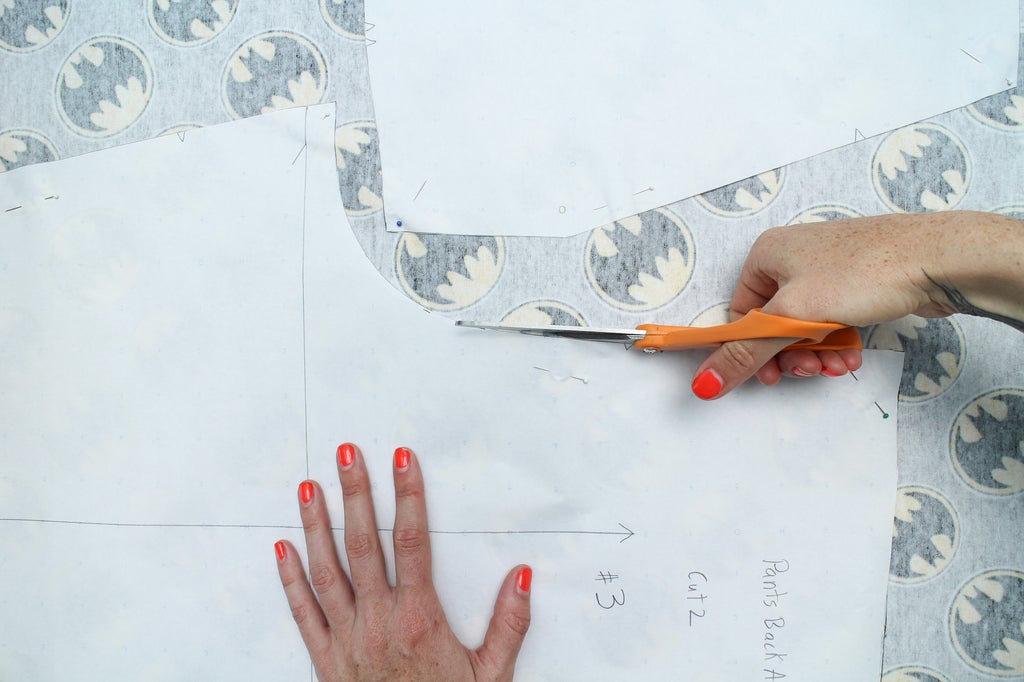
When you have the pattern cut out, snip the notches, and mark the buttonhole placement with a tracing wheel and transfer paper.


Step 7: Make Buttonholes
Before we start sewing our fabric together, we need to make the buttonholes on the ankles and waist of the pants.
You marked the buttonholes onto one copy of each pattern piece with your tracing wheel, now remove the paper from the pattern and trace the mark through to the other layer of fabric.

Just like we did when we made out buttonhole, we are going to reenforce the fabric here with some fusible interfacing. Cut 6 squares of interfacing about 2" x 2" and fuse them over the buttonhole marks. If you use white fusible, you should still be able to see the mark through the fusible, or you can use the pattern to mark it again.


Use the buttonhole function on your machine to create buttonholes in all 6 locations on the pattern.



When you're done, use your seam ripper to cut open the buttonholes, making sure to put pins in each end first so you don't cut the stitches.


Step 8: Sew the Pockets to the Front Leg
Now we are going to attach the pocket to the front leg, to do this, lay the pocket on top of the leg with the right sides together, match up the angled edges and pin them together.



With your machine set to a straight stitch and a length of about 2.5, sew these two pieces together with a 5/8" seam allowance.



Step 9: Press and Topstitch
Now trim these seam allowances down to 1/4", open them up and press the seam allowance over toward the pants leg.


Fold the pocket portion over, so the right side is facing out, and then press the folded edge flat along the seam.


With your stitch length set to about 3, topstitch 1/4" in from the edge of the fold on each side.

Step 10: Fold and Sew the Pockets
Now fold each pocket in half so that the folded half of the pocket fills in the triangle cut out of the top corner of the pant leg.


Match the two notches on the bottom of the pocket to know where to make the fold.


Pin the bottom edge.

Sew the bottom edge of each pocket seam on the machine with the same 5/8" seam allowance.

Finish the seam with zigzag and trim the seam allowance.

Step 11: Baste Pockets
Now baste the pockets to the pant legs at the base of the pocket opening and across the fold at the waistband.
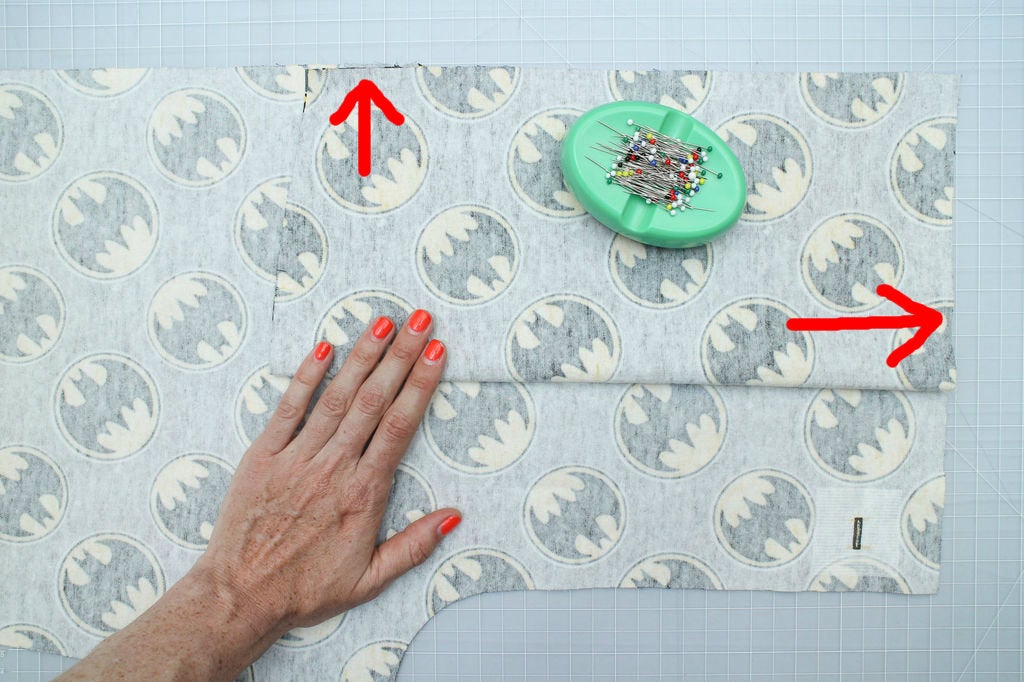
This will hold the layers together as we sew the front leg to the back leg and create the waist casing.

Step 12: Sew the Inseams
Now take the back pant legs and lay each one over a front leg, with right sides together.
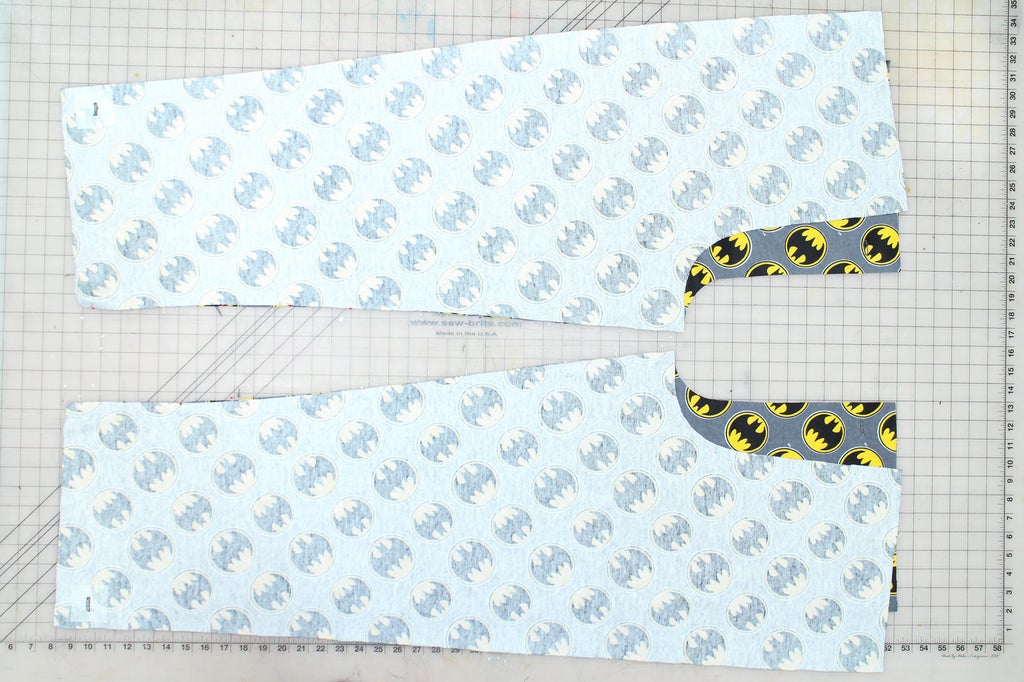
Pin the two layers together along the inseam and sew them with a 5/8" seam allowance.


Press the seams open with your iron.


Finish the seams with a seam finishing technique of your choice. Your pattern may have something to say about this as well. Mine suggested either a zigzag finish or a single fold hem style seam finish. I sent with a zigzag.

Step 13: Sew the Crotch Seam
Before we sew the crotch seam, we need to mark one thing I forgot to mark onto the fabric from the pattern earlier. On the center front above the buttonhole, there are two circles marked. These show where you need to leave an opening in the seam that will let you feed the elastic into the waist casing. Mark these two dots on each piece with your disappearing pen.


Then open up each front and back leg piece at the inseam, and lay them on top of each other, right sides together like this:

Match the inseams, and pin the crotch seam together.


Sew the crotch with a 5/8" seam allowance, then sew over the same seam again to re-enforce it. Leave the space between the dots un-sewn, sewing and re-enforcing on each side.

Trim the curved part of the seam down to 1/4" so you can press it flat.

Then press the seam open with your iron.


Step 14: Sew the Sideseams
Now match up the seams on the outside of the legs, pin them together, sew them and press them open.

Then zigzag the seam allowances.

Step 15: Press and Sew the Elastic Channel
Now we're going to sew the channel on the waistband that will hold the elastic.
First baste down the tops of the seam allowances in the center front and back about 3" down. The reason you are dong this is so the elastic won't get caught on the seam allowances while you are threading it through the waist casing.


When this is done, take your pants to the ironing board and press the edge of the waist down by 1/4", then again by 1" to create the casing.


Sew the casing on your sewing machine about 1/8" up from the fold.

Step 16: Insert the Elastic
Cut a piece of elastic about 2-3 inches shorter than your waist.

Then use the safety pin trick to insert the elastic into the waist casing through the opening you left in the center front seam.


Overlap the ends of the elastic and sew them together. Then tuck them back into the channel.


Try the pants on to see if the waist is the right size, if it's way too loose, you can cut the elastic and make it shorter.
Step 17: Make the Ankle Channels and Insert the Ribbons
Now make similar casings on each ankle by pressing the hem up 1/2" and then another 1/2".

Then sewing next to the fold.

Instead of inserting elastic here, we are just going to insert a ribbon that you can tie and untie to cinch the ankles. Use the same safety pin technique you used with the elastic, and insert the ribbon through the buttonholes you created earlier.


Leave a few inches extra on each end of the ribbon with a knot to keep the ends from fraying.


Now do the same thing around the waist inserting the ribbon over the elastic, and tying a bow in the front.

Step 18: You're Done!
Now get all comfy in these new soft PJ pants that you made yourself! This is obviously a simple design, but I hope that creating it has helped you understand the concept of following a sewing pattern to create a garment. Of course, once you get into more fitted and structured garments, things get a bit more complicated, but the more you practice, the more you'll learn!
Weather you've followed this exact pattern or chosen a different design, feel free post an I Made It in the comment section!











